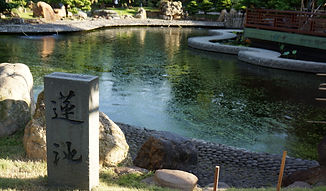
Chi Lin Nunnery
If you ever want to experience a taste of traditional chinese culture, the Chi Lin Nunnery is just the place for you.
The area was originally the garden villa of Chan Tsat, a local business magnate who was a devoted buddhist, hence he sold the villa to Kok Yi Fa Shi and her student Wei Um Fa Shi at a cheap price for religious uses. Wei Um Fa Shi planned to use this place as a nunnery where nuns could mediate and cultivate their spiritual depths in 1936, and 10 years later, Chi Lin Nunnery was officially established. The abbess of Chi Lin Nunnery, Wang Chi Fa Shi, noticed that the large population increase in the area and the aftereffects of the war had resulted in a harsh life for the poorer. Academic facilities were inadequate for the children, hence she formed the Chi Lin Chartiable School under the nunnery. The school ran under the generous donations from multiple benefactors, and served the children in Diamond Hill and Kowloon city. The school converted to Chi Lin School, as it started to receive subsidies from the government. A nursing home service for the elderly was also added afterwards, which induced the improvement in welfare services which promoted buddhism.




In 1948, many monks and nuns from Mainland China escaped to Hong Kong because of the Chinese Revolution led by Mao, and the Chi Lin Nunnery took in many of these people. Since there was a huge influx in population, the nunnery had to be rebuilt and new complexes had to be added to accommodate these people. The nunnery was further expanded because of the construction of Tate’s Cairn Tunnel, as the nearby squatter settlement had to be cleared. The “One Man One Slate” campaign was launched in order to raise funds for the expansion and renovation of Chi Lin Nunnery, as the project required money that the nunnery did not have.
The complex took on a traditional Tang Dynasty architectural design, with the building materials mainly composed of natural wood, stone and mud. The Chi Lin Nunnery implements the “Sam Jin Sam Chun Mun Yuen” 三進三重門一院 architectural design, which translates to “Three entries, 3 heavy doors, 1 garden”. The design tightly knits the main hall, the bell tower, drum tower, ancestral halls and other halls and quarters of the Chi Lin Nunnery. Another building to take note of is the Ten Thousand Buddha Pagoda, which is on the north eastern hill separate from the main complex.
The Chi Lin Nunnery receives a large amount of visitors on traditional Chinese festivals, such as the “Yuen Siu Festival”, which is on the 15th day of the first Chinese lunar months, and the Birthday of the Buddha, which is on the 8th day of the 4th Chinese lunar month, which is the most important festival for the nunnery, hence full prayer services are held in celebration for this special occasion. However, other than these festivals, the Chi Lin Nunnery is usually a quiet and serene place that is open to the public free of charge.

Address - 5 Chi Lin Drive, Diamond Hill, Kowloon, Hong Kong
How To Get There: MTR Diamond Hill Exit C2